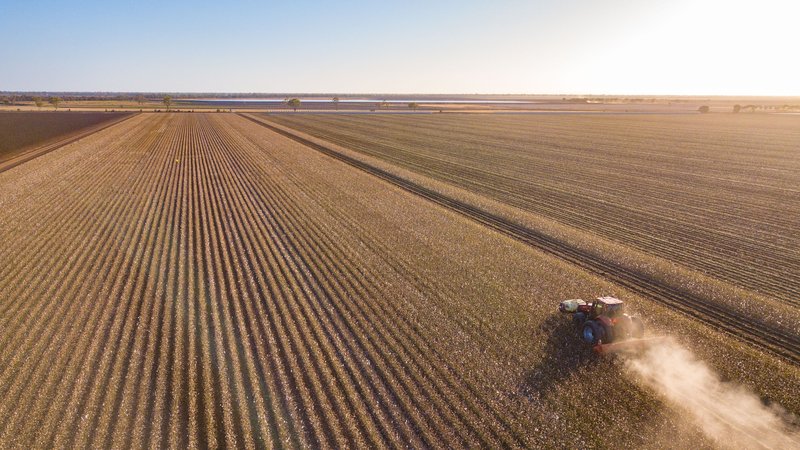Australia's agriculture, forestry and fisheries exports to the PRC
November 07 2019

A report published in May 2019 by the Australia-China Relations Institute at the University of Technology Sydney established that Australia’s economic exposure to the People’s Republic of China (PRC) is large and growing, even when exports of minerals and fuels are excluded. While there are concerns that such a large exposure implies ‘dependence’ on exports to the PRC and therefore risk, the report found that such risks are ‘small grey rhinos’ in aggregate, but vary at industry and regional levels.[1]
The Department of Foreign Affairs and Trade groups goods exports into four broad categories: agriculture, forestry and fisheries (AFF); manufactures; minerals and fuels; and other goods exports. AFF exports have been playing an increasingly important part in Australia’s export profile as the second largest export sector after minerals and fuels. The PRC has been Australia’s largest market for AFF exports since 2010-11. This briefing provides an overview of the AFF exports with the greatest exposure to the PRC in both demand and growth.[2]
1. Total AFF exports were worth $53.0 billion in 2018-19. Of this, 29.6 percent, or $15.7 billion, was to the PRC. This made AFF the second most valuable group of goods exports to the PRC, behind minerals and fuels.
2. A decade ago, there were eight goods categories at the Standard International Trade Classification 3-digit level for which the value of exports to the PRC were worth more than $100 million. By 2018-19, the number of such goods categories had more than doubled to 18:
- Wool and other animal hair ($2.86 billion)
- Beef ($1.75 billion)
- Edible products and preparations ($1.62 billion)
- Alcoholic beverages ($1.19 billion)
- Wood chips or particles ($978 million)
- Meats other than beef ($943 million)
Note: 'Meats other than beef' includes sheep and pork as well as other meats such as chicken and goat.
- Barley ($915 million)
- Cotton ($900 million)
- Fruit and nuts ($828 million)
- Crustaceans ($801 million)
- Rough wood ($604 million)
- Raw hides and skins ($545 million)
- Milk, cream, whey and yoghurt ($475 million)
- Live animals other than sea-food ($304 million)
- Animal feed ($145 million)
- Crude animal matter ($128 million)
- Pulp and waste paper ($124 million)
- Cheese and curd ($104 million)
3. Among these goods, there is considerable variation in the level of relative ‘dependence’ on PRC demand, with exports to the PRC accounting for different percentages of total exports:
- Rough wood (92.3%)
- Raw hides and skins (82.7%)
- Crustaceans (78.4%)
- Wool and other animal hair (74.8%)
- Barley (66.2%)
- Wood chips or particles (61.2%)
- Edible products and preparations (55%)
- Pulp and waste paper (52.7%)
- Cotton (35.2%)
- Alcoholic beverages (35.2%)
- Milk, cream, whey and yoghurt (34.6%)
- Fruit and nuts (34.2%)
- Crude animal matter (31.1%)
- Beef (18.5%)
- Meats other than beef (18.3%)
- Live animals other than seafood (15.5%)
- Animal feed (10.6%)
- Cheese and curd (10.5%)
4. Australia’s dependence on the PRC in AFF exports is measurable based not only on value at a particular time, but also in terms of growth. In the last five years, Australia’s total AFF exports exhibited growth of $9.57 billion. PRC demand was responsible for 63 percent of this growth.
5. The top 10 contributors to growth in exports to the PRC were:
- Edible products and preparations ($1.49 billion)
- Wool and other animal hair ($1.12 billion)
- Alcoholic beverages ($983 million)
- Wood chips or particles ($978 million)
- Beef ($962 million)
- Crustaceans ($766 million)
- Fruit and nuts ($762 million)
- Meats other than beef ($381 million)
- Rough wood ($353 million)
- Milk, cream, whey and yoghurt ($150 million)
6. Investment in food and agribusiness accounted for only $85 million, or 1 percent, of $8.24 billion in PRC foreign direct investment in 2018.[3] An ANZ report published in November 2016 found that Australian agriculture will require an additional $109.2 billion of investment by 2025 just to maintain its current share of global agriculture exports, expanding to $1 trillion by 2050, which if addressed could yield $0.7 - $1.7 trillion in exports over the next 40 years.[4]
This fact sheet was prepared by Michael Zhou, Project and Research Officer, Australia-China Relations Institute, University of Technology Sydney.
Sources
[1] James Laurenceson, Michael Zhou, Small grey rhinos: understanding Australia’s economic dependence on the PRC, Australia-China Relations Institute, University of Technology Sydney, May 22 2019 <https://www.australiachinarelations.org/content/small-grey-rhinos-understanding-australia%E2%80%99s-economic-dependence-china>.
[2] All data in this briefing is sourced from: Australian Government Department of Foreign Affairs and Trade, ‘Trade statistical pivot tables’, October 2019 <https://dfat.gov.au/about-us/publications/Pages/trade-statistical-pivot-tables.aspx>.
[3] Doug Ferguson, Helen Zhi Dent, Vaughn Barber, Hans Hendrischke, Wei Li, Ben Burston, Demystifying Chinese investment in Australia – April 2019, KPMG and The University of Sydney, April 2019 <http://demystifyingchina.com.au/reports/demystifying-chinese-investment-in-australia-april-2019.pdf>.
[4] ANZ, Australian agriculture: funding our future, Australian Agribusiness ANZ, November 17 2016 <https://bluenotes.anz.com/posts/2016/11/farming-for-funds-how-do-we-pay-for-australian-agriculture>.

